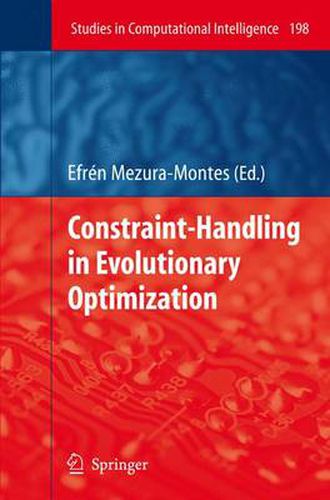Readings Newsletter
Become a Readings Member to make your shopping experience even easier.
Sign in or sign up for free!
You’re not far away from qualifying for FREE standard shipping within Australia
You’ve qualified for FREE standard shipping within Australia
The cart is loading…






This title is printed to order. This book may have been self-published. If so, we cannot guarantee the quality of the content. In the main most books will have gone through the editing process however some may not. We therefore suggest that you be aware of this before ordering this book. If in doubt check either the author or publisher’s details as we are unable to accept any returns unless they are faulty. Please contact us if you have any questions.
Evolutionary algorithms (EAs), as well as other bio-inspired heuristics, are widely usedto solvenumericaloptimizationproblems.However,intheir or- inal versions, they are limited to unconstrained search spaces i.e they do not include a mechanism to incorporate feasibility information into the ?tness function. On the other hand, real-world problems usually have constraints in their models. Therefore, a considerable amount of research has been d- icated to design and implement constraint-handling techniques. The use of (exterior) penalty functions is one of the most popular methods to deal with constrained search spaces when using EAs. However, other alternative me- ods have been proposed such as: special encodings and operators, decoders, the use of multiobjective concepts, among others. An e?cient and adequate constraint-handling technique is a key element in the design of competitive evolutionary algorithms to solve complex op- mization problems. In this way, this subject deserves special research e?orts. After asuccessfulspecialsessiononconstraint-handlingtechniquesusedin evolutionary algorithms within the Congress on Evolutionary Computation (CEC) in 2007, and motivated by the kind invitation made by Dr. Janusz Kacprzyk, I decided to edit a book, with the aim of putting together recent studies on constrained numerical optimization using evolutionary algorithms and other bio-inspired approaches. The intended audience for this book comprises graduate students, prac- tionersandresearchersinterestedonalternativetechniquestosolvenumerical optimization problems in presence of constraints.
$9.00 standard shipping within Australia
FREE standard shipping within Australia for orders over $100.00
Express & International shipping calculated at checkout
This title is printed to order. This book may have been self-published. If so, we cannot guarantee the quality of the content. In the main most books will have gone through the editing process however some may not. We therefore suggest that you be aware of this before ordering this book. If in doubt check either the author or publisher’s details as we are unable to accept any returns unless they are faulty. Please contact us if you have any questions.
Evolutionary algorithms (EAs), as well as other bio-inspired heuristics, are widely usedto solvenumericaloptimizationproblems.However,intheir or- inal versions, they are limited to unconstrained search spaces i.e they do not include a mechanism to incorporate feasibility information into the ?tness function. On the other hand, real-world problems usually have constraints in their models. Therefore, a considerable amount of research has been d- icated to design and implement constraint-handling techniques. The use of (exterior) penalty functions is one of the most popular methods to deal with constrained search spaces when using EAs. However, other alternative me- ods have been proposed such as: special encodings and operators, decoders, the use of multiobjective concepts, among others. An e?cient and adequate constraint-handling technique is a key element in the design of competitive evolutionary algorithms to solve complex op- mization problems. In this way, this subject deserves special research e?orts. After asuccessfulspecialsessiononconstraint-handlingtechniquesusedin evolutionary algorithms within the Congress on Evolutionary Computation (CEC) in 2007, and motivated by the kind invitation made by Dr. Janusz Kacprzyk, I decided to edit a book, with the aim of putting together recent studies on constrained numerical optimization using evolutionary algorithms and other bio-inspired approaches. The intended audience for this book comprises graduate students, prac- tionersandresearchersinterestedonalternativetechniquestosolvenumerical optimization problems in presence of constraints.